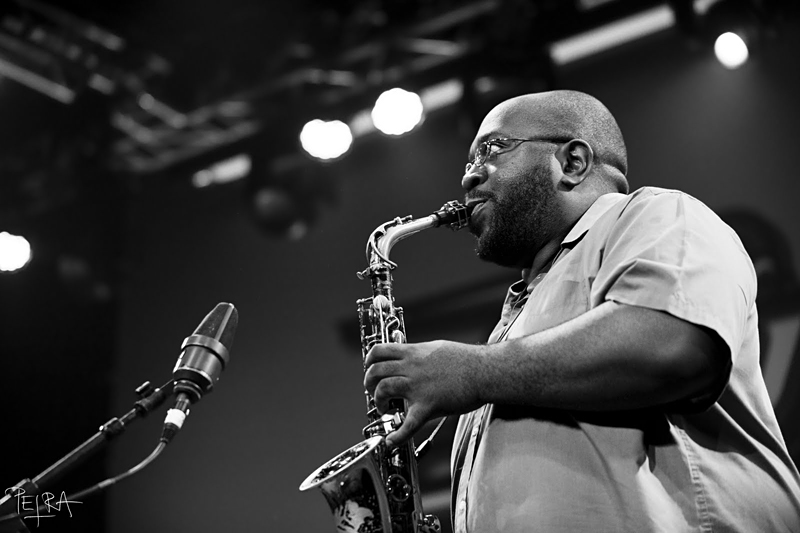Inside a prime retail location at the corner of Broadway and John is one of the most unbusinesslike businesswomen you’ll ever meet. Jamie Lutton, owner of the used-book store Twice Sold Tales, is a self-described “misfit” with a loopy, distracted manner who seems hardly capable of remembering her own name, let alone yours, let alone paying her taxes, payroll, and utility bills.
Yet Lutton has a passion for books and a true gift for buying and selling them—as well as for creating an atmosphere where, as she puts it, “people like me can feel comfortable.” Her oddball store, with its chaotic decor and meticulously organized shelves, has become a Capitol Hill institution. And the corner building where she is a tenant (home also to a piroshky bakery, a Cellophane Square, and a few other shops) is a smallbusiness bulwark against Broadway’s creeping chain-store gentrification.
But that may soon change. Depending on some decisions that will be made over the next few weeks, Lutton’s corner building, and several others, could eventually be leveled in order to make room for the entrance to Capitol Hill’s light rail station.
Of course, the loss of a few businesses on the Hill can’t even begin to compare to the carnage in Rainier Valley, where scores of homes and commercial properties will be bought up by Sound Transit and a surface-level train will chug down Martin Luther King Way.
Although the long-term effects are clearly greatest in South Seattle, the construction process itself will create more immediate disruption to Broadway, according to Sound Transit’s Mary Jo Porter. On M.L.K., “it will be like repaving,” she says, as the agency creates a guideway down the middle of the street. While on Capitol Hill, crews will be opening up the earth and constructing a gigantic building inside over a period of several years. “Everything’s got to go down that hole,” she notes. “This will be a much bigger impact.”
Some independent merchants are wondering whether they can withstand the hit. Broadway has always been precariously perched between the seedy and the chi-chi. With downtown Seattle cleaned up and handed over to tourists and high culture, Broadway is our last unruly urban strip, where all forms of humanity meet and there’s no place to park. Part queer thoroughfare, street-kid hangout, and “destination” shopping center, Broadway has been struggling to keep its boutiques and downscale dives alive amid the encroachment of suburban-style chains paying higher rents. Some fear that a massive, years-long construction project could push Broadway over the edge, leading to a survival of the richest, in which only big corporate stores make it through to the end.
Some recall how the building of the downtown bus tunnel devastated Third Avenue in the 1980s. “Third Avenue became a little ghost town,” notes Carl Medeiros, who owns Metro Clothing and Panache. “They’re still trying to put that together. If this goes on too long [on Broadway], it could put all the [independent] shops out of business.”
Concerns about Broadway’s fate have intensified in the last few months as Sound Transit has abruptly revised its construction plans in ways that could have a more destructive effect on the neighborhood. These moves are partly an effort to cut costs. According to testimony before the Seattle City Council last week, Sound Transit’s light rail plan is currently $200 million over budget. And the most expensive part of the whole Sound Transit system is the Capitol Hill tunnel.
The agency has long said it would build the Broadway rail station by mining it out from below—a method that creates relatively little disturbance at ground level. But around the first of the year, according to Sound Transit, engineers found sand at the depth where they wanted to build, which made mining impossible. Their solution was to bring the station up higher and use what’s called “cut and cover” construction—a top-down method that creates far more mess and disruption on the street, and that is also, as it happens, much cheaper.
Then, just a few weeks ago, Sound Transit dropped another bombshell. It proposed moving the underground station one block west of Broadway, to underneath Nagle Place, the street that runs alongside the reservoir. That scheme would knock down about a half-dozen buildings and wipe out several small but precious parking lots just off Broadway. It would also expand the construction site to four blocks instead of two, so as to build a “crossover” point where the northbound and southbound train tracks could meet (providing an escape route for maintenance vehicles or broken-down trains).
In addition, the agency proposed to remove the “cover” part from the “cut and cover” method; instead it wants to leave the holes open for several years in order to make it easier to send down tracks and other equipment. All together, the agency claims, these changes could save as much as $40 million. At a briefing about the proposal before the Seattle City Council last week, council member Tina Podlodowski pronounced: “This is Capitol Hill’s worst nightmare.”
Indeed, a coalition of Capitol Hill activist groups, including the Community Council, the Broadway Business Improvement Association, and others, have signed a letter opposing the Nagle Place proposal. “It’s a really bad idea, and there is absolutely no support for it,” says Ron Amundson, a developer who owns the Hollywood Video store and the former Broadway Arcade. Amundson complains that from the time the Nagle Place idea was first broached at a public meeting a few weeks ago, Sound Transit “has been on a steamroller.”
Sound Transit officials insist that is not the case. The agency has to make a preliminary decision on the alignment of the Broadway station within the next month, so as to begin engineering work on the tunnel. But Sound Transit’s Mary Jo Porter insists that “every alternative” will continue to be studied through the end of the summer, when the agency completes its final environmental impact statement.
Kevin Guertin, director of the Broadway Business Improvement Association, concedes that it is risky for him to be lobbying for construction on Broadway proper, rather than a block away. But he believes the Nagle plan would have a worse overall impact. He does not blame Sound Transit for exploring the option: “If they have an opportunity to save $40 million and they don’t take it, they’re screwed,” he says. Still, he and other observers question how real those savings are. At a public meeting on Monday night, Sound Transit is supposed to supply a cost/benefit breakdown of the two alternatives.
Many on Broadway are also concerned that Sound Transit seems to be targeting the Twice Sold Tales building for demolition, rather than the US Bank branch that sits just across the street. One, or possibly both, corners will be converted into a station entrance. “What will hurt Broadway more,” asks Carl Medeiros, “leveling those retailers or a bank?” Mary Jo Porter says that no decision has been made on this issue. She also confirms (contrary to what many on the Hill seem to believe) that the choice of where to locate the street-level entrance is actually independent of the Nagel-vs.-Broadway decision, since the underground platform can be connected up to either corner.
Standing amid rows of bookshelves, surrounded by eight cats and a dinosaur with a copy of Jurassic Park in its mouth, Jamie Lutton wouldn’t appear to stand much of a chance against the smooth-talking community outreach coordinators of Sound Transit (“They speak Norman, not Anglo-Saxon” is how she puts it), let alone the powers of eminent domain. “My politics are what I do,” she says: “Encouraging 19-year-olds to read Thucydides.” Nonetheless, she has already gotten more than 1,500 customers to sign an in-store petition, opposing any attempt to remove her, and she is getting plenty of support from her landlord, whom she calls “a saint.”
By federal law, Sound Transit has to pay displaced shop owners compensation, and help them find a new, equivalent location. But Lutton says, “The size, location, and rent of this place would be impossible to replicate.” She likes her corner for the same reason Sound Transit does: It’s the premier pedestrian crossroads on the Hill. “I want to be here as an old lady,” she says. “I want to die right here, falling down, talking.”
Naturally, she ends our interview by asking: “Can I recommend a book to you?” She suggests Stan Luxenburg’s Roadside Empires: How the Chains Franchised America.







